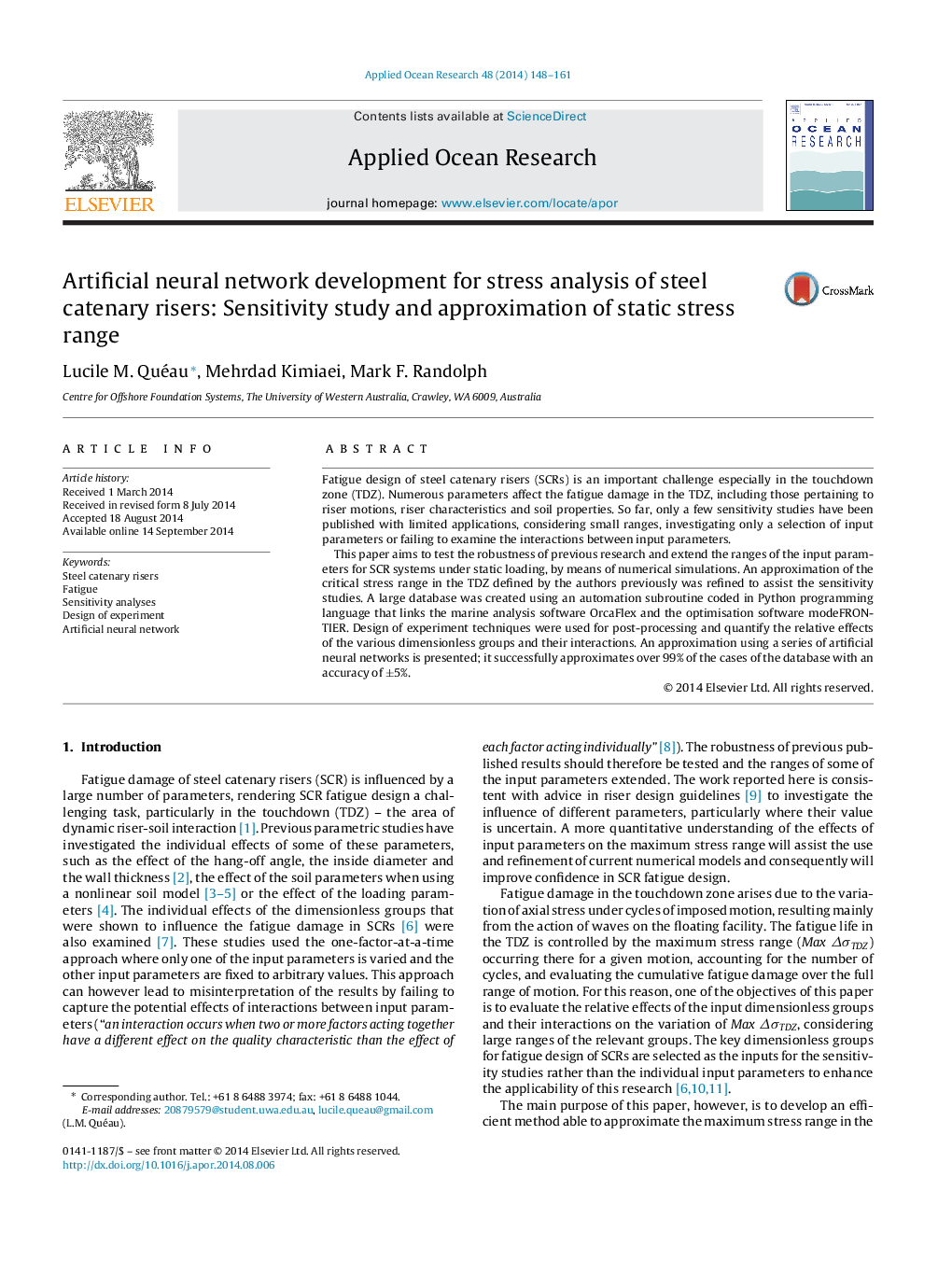| Article ID | Journal | Published Year | Pages | File Type |
|---|---|---|---|---|
| 1719996 | Applied Ocean Research | 2014 | 14 Pages |
•Steel catenary riser fatigue sensitivity to key dimensionless groups is explored.•Design of experiment techniques, artificial neural network approximations are used.•The relative effects of dimensionless groups and their interactions are researched.•An approximation of maximum static stress range is defined.•A very good level of accuracy is obtained on the overall database.
Fatigue design of steel catenary risers (SCRs) is an important challenge especially in the touchdown zone (TDZ). Numerous parameters affect the fatigue damage in the TDZ, including those pertaining to riser motions, riser characteristics and soil properties. So far, only a few sensitivity studies have been published with limited applications, considering small ranges, investigating only a selection of input parameters or failing to examine the interactions between input parameters.This paper aims to test the robustness of previous research and extend the ranges of the input parameters for SCR systems under static loading, by means of numerical simulations. An approximation of the critical stress range in the TDZ defined by the authors previously was refined to assist the sensitivity studies. A large database was created using an automation subroutine coded in Python programming language that links the marine analysis software OrcaFlex and the optimisation software modeFRONTIER. Design of experiment techniques were used for post-processing and quantify the relative effects of the various dimensionless groups and their interactions. An approximation using a series of artificial neural networks is presented; it successfully approximates over 99% of the cases of the database with an accuracy of ±5%.
